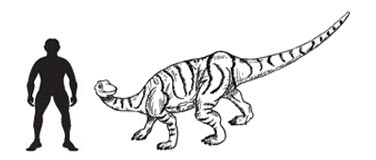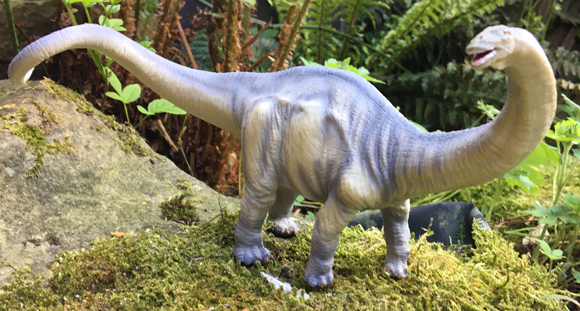Rare Dinosaur Trace Fossils Discovered in Yemen
Dinosaur Footprints Discovered on the Arabian Peninsula
It may be surprising to some, but there are still significantly large areas of the world yet to be fully explored by palaeontologists and geologists, dinosaur trace fossils can still be discovered. The geology of an area may have been mapped, indeed elements of the stratigraphic column – the sequences of rock layers and their relation to each other in terms of their time of deposition, may be known, but no detailed studies of the local fossils may have been made.
Dinosaur Trace Fossils
Over the last ten years or so, scientists have begun to explore relatively unknown areas of the world, in terms of their fossil evidence. Digs have taken place up mountain sides in the Alps, along desiccated valley floors in the middle of the Antarctic and on the hot, dry plains of central Australia. A scientific paper published this week provides details on a set of dinosaur tracks discovered in Yemen, a small country on the tip of the Arabian peninsula, these are the first dinosaur tracks to be found in this region.
Dinosaur Tracks in Yemen
The tracks will help scientists understand more about the relationship between dinosaurs discovered in Africa and those from Europe as well as providing an insight into the herding behaviour of these prehistoric beasts.
There are two main types of fossil, firstly there are body fossils, these are the fossilised remains of parts of the “body” of animals and plants, such as bones, leaves and shells, or their impression in the surrounding sediment. It does not matter whether or not the parts of the body have been altered in chemical composition or physical structure. The second type of fossil are trace fossils. These preserve evidence of the “activity” of animals, trace fossils can be trackways (as found in Yemen), trails, burrows or borings. Trace fossils are often the only evidence left for scientists to study of soft-bodied animals such as worms.
The dinosaur footprints from Yemen were made by two different types of dinosaur as they crossed a muddy plain approximately 150 million years ago in the Late Jurassic (Kimmeridgian/Tithonian faunal stage). During this period in Earth’s history, much of Europe lay under warm, shallow tropical seas, whilst the land that was to become the Arabian peninsula was still firmly attached to eastern Africa in a super continental landmass.
Dinosaur Trackways
The first set of footprints, were left by a small group of sauropods, a total of 11 animals, which all seemed to be heading in the same direction. The footprints are of different sizes and the spaces between the individual prints made by each animal are also different. This indicates that the animals were of different sizes, perhaps this was a family group or herd.
The footprints left by the herding herbivores varied in size, implying a roving group of adults and children. “Smaller individuals had shorter stride lengths, and took more steps to keep up with the larger individuals,” commented Nancy Stevens, an assistant professor of palaeontology at Ohio University in Athens, and one of the co-authors of the scientific paper published describing the tracks.
Sauropods were large, long-necked animals such as diplodocids, but it is not possible to identify the particular genus from these trace fossils.
A Single Dinosaur
The second set of trace fossils consist of a single trackway made by a lone dinosaur, which was walking in the opposite direction. This set of prints were made by an ornithopod, a bird-hipped dinosaur (ornithischian). Unlike the sauropods, this animal was bipedal, walking upright on its hind legs. Once again, it is impossible to identify a particular genus from this set of prints, but they might have been made by an animal such as a Camptosaurus (member of the Camptosauria clade).
An Illustration of Camptosaurus

“Bent Lizard” to scale. Dinosaur footprints from a Camptosaurus-like dinosaur have been found in Yemen.
Picture credit: Everything Dinosaur
The picture (above) shows an illustration of the CollectA Camptosaurus model in the: CollectA Age of Dinosaurs Popular Range.
The muddy plain where the tracks were made was adjacent to a watercourse that was drying up, such areas are used by animals today as natural corridors, it seems that dinosaurs used these areas as highways to, they would have been devoid of trees and open, making them difficult places for predators to stage an ambush. The sauropods and ornithopods were plant-eaters, so these animals could have been moving to and from areas where food could be found. Certainly, in the case of the group of sauropods they would quickly reduce a grove of cycads or bennettites to nothing more than a few crushed fronds and damage trunks, as these large animals fed. Large herbivorous dinosaurs such as the sauropods would have had a dramatic effect on the local flora, helping to shape the landscape, just as herds of elephants on the African plains do today.
The individual ornithopod tracks, may indicate that this animal was a male, perhaps choosing to live away from the protection of a herd, the tracks are certainly quite large, indicating an adult animal possibly, although this is all speculation and cannot be proved for certain.
A Model of a Typical Brontosaurus Dinosaur Model
Picture credit: Everything Dinosaur
Photographs show three footprints made by this bipedal dinosaur, the tracks show the animal moving away from the point from which the picture was taken, the three toes on each foot can clearly be seen.
Analysing the Dinosaur Trackways
It is not possible to state whether the two types of dinosaur passed each other, one type of dinosaur may have passed this way a few hours before or after the other animals had wandered through in the opposite direction. Had these two types of dinosaur met, they would most probably have ignored each other, neither would have been a threat and these types of animal, speculated to be relatively common in the area, would have been used to seeing different dinosaur species in the neighbourhood.
There are many exposed rock outcrops of Jurassic age in the area. The authors of this new paper are confident that other fossils of Mesozoic creatures will be found, perhaps even the fossils of meat-eating dinosaurs, as it would be likely that with prey animals around the carnivores such as allosaurs would also have been in the area.


